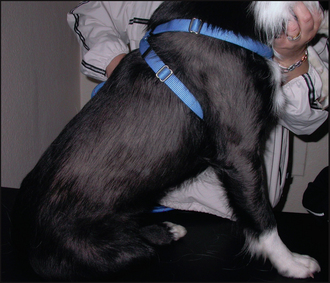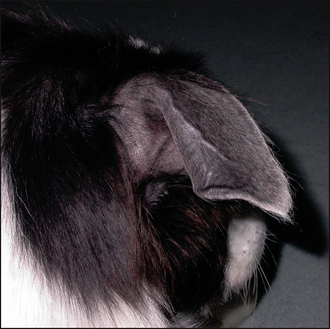23 Colour dilution alopecia
CASE HISTORY
• Over the past 6 weeks, there had been a progressive alopecia affecting predominantly the trunk and pinnae. White areas of hair coat were unaffected.
• Diet consisted of a relatively poor quality complete dried food with occasional scraps, dog chews and dog biscuits.
CLINICAL EXAMINATION
General physical examination was unremarkable.
Examination of the skin revealed generalized, partial to complete alopecia over the pinnae and trunk (Figs 23.1 and 23.2). White areas were unaffected.





